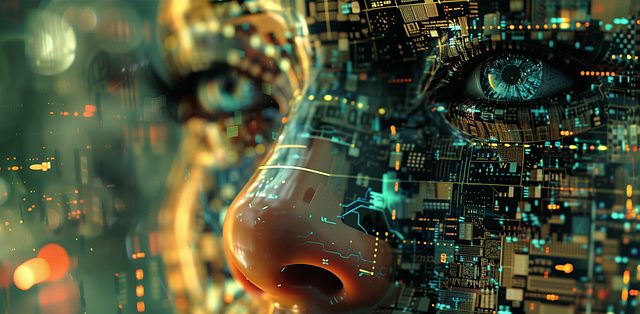The evolution of chatbot AI has been a remarkable journey from rule-based systems to advanced conversational companions. Early chatbots, like ELIZA in the 1960s, had limited capabilities and focused on simple tasks. However, advancements in NLP and machine learning revolutionized chatbots, enabling them to understand context, interpret user intent, and generate human-like responses. Modern chatbots, powered by AI models like Transformers, offer context-aware conversations across various industries, enhancing user experiences. With ongoing progress in NLP, future chatbot AI will further blur the lines between human and machine interaction.
Chatbots have evolved from basic, rule-based systems to engaging, personality-driven assistants. This transformation is driven by advances in artificial intelligence, particularly natural language processing (NLP). Today’s chatbots aren’t just functional; they’re fun. From humorous interactions in customer service to gamified learning experiences, these AI companions are reshaping how we interact with technology. However, designing and deploying fun chatbots comes with ethical considerations, from maintaining appropriateness to ensuring privacy and data security. This article explores the evolution of chatbot AI, the art of designing charismatic personas, key use cases, and the challenges that developers must navigate.
- The Evolution of Chatbot AI: From Basic to Fun
- – A brief history of chatbot development
- – Early chatbots and their limitations
- – Advances in natural language processing (NLP)
The Evolution of Chatbot AI: From Basic to Fun

The evolution of chatbot AI has been a fascinating journey, transforming from basic, rule-based systems to sophisticated, engaging companions we interact with today. Early chatbots were often limited to pre-programmed responses and rigid conversations, primarily serving as automated customer support or information retrieval tools. These early stages laid the foundation for what was possible, but interactions felt more like talking to a machine than a friend.
As artificial intelligence advanced, so did chatbots. The advent of natural language processing (NLP) and machine learning enabled chatbots to understand context, interpret user intent, and generate more human-like responses. This shift marked a turning point, transitioning chatbots from basic AI to engaging fun. Today, chatbots can engage in playful conversations, tell jokes, play games, and even offer therapeutic support, all while learning and evolving with each interaction.
– A brief history of chatbot development

Chatbots have evolved significantly since their early beginnings in the 1960s, when Joseph Weizenbaum created ELIZA—a simple program that mimicked a Rogerian psychotherapist. This marked the inception of artificial intelligence (AI) in conversational agents, setting the stage for future advancements. Over time, chatbot development gained momentum with the advent of rule-based systems and expert systems, allowing machines to process natural language and engage in more complex interactions.
The real breakthrough came with the emergence of machine learning and deep learning techniques, enabling chatbots to learn from vast amounts of data and improve over time. This evolution led to sophisticated AI models like Transformer architectures, which power many modern chatbots, providing context-aware, human-like conversations. Today, chatbots are integrated into various applications, enhancing user experiences across industries, from customer service to entertainment.
– Early chatbots and their limitations

Early chatbots, often referred to as the pioneers of conversational AI, had their roots in the 1960s. These early attempts at creating chatbot ai were limited by the technology of the time and the simplicity of programming languages. They typically followed predefined rules and could only handle basic, structured conversations, usually focused on information retrieval or simple question-answering tasks.
These chatbots often struggled with context, understanding natural language nuances, and adapting to user input that strayed from expected paths. Their limited capabilities meant they could not engage in complex or nuanced interactions, leading to a frustrating user experience for those who sought more dynamic conversations. However, despite these constraints, early chatbots laid the groundwork for modern AI’s conversational abilities, paving the way for advancements in natural language processing and machine learning that have transformed chatbot ai into the versatile tools we see today.
– Advances in natural language processing (NLP)

The evolution of Chatbot AI is a direct result of advances in natural language processing (NLP), enabling machines to understand and interpret human language more effectively. This breakthrough has led to chatbots that can engage in meaningful conversations, providing a level of interactivity that was once unimaginable. With NLP, chatbots can now process user inputs, extract relevant information, and generate contextually appropriate responses, making the interaction feel natural and intuitive.
These advancements have opened up a world of possibilities, from customer service and support to personal assistants and even therapeutic companions. Chatbots powered by NLP can handle complex queries, offer tailored recommendations, and adapt to individual user preferences, enhancing the overall user experience. As technology continues to progress, we can expect even more sophisticated chatbot AI that will further blur the lines between human and machine interaction.
Chatbots have come a long way since their early, basic beginnings. The evolution of chatbot AI, driven by advances in natural language processing, has led to more sophisticated and engaging interactions. Today’s fun chatbots not only assist users but also entertain them with creative responses and unique personalities. As NLP continues to improve, we can expect even more immersive and intelligent conversational experiences in the future, making chatbot ai an exciting field to watch.
